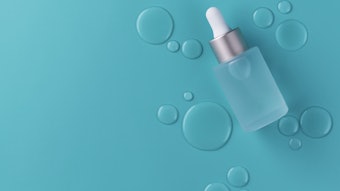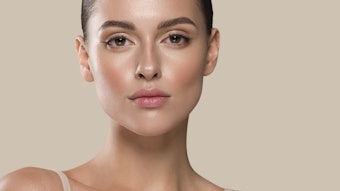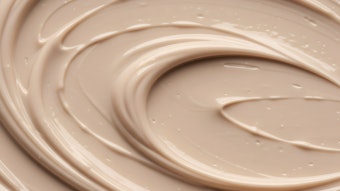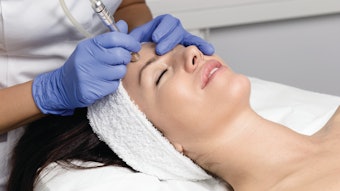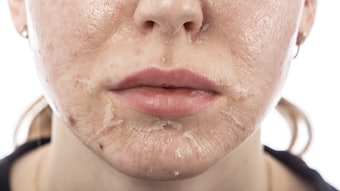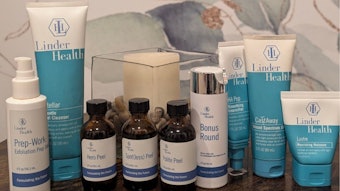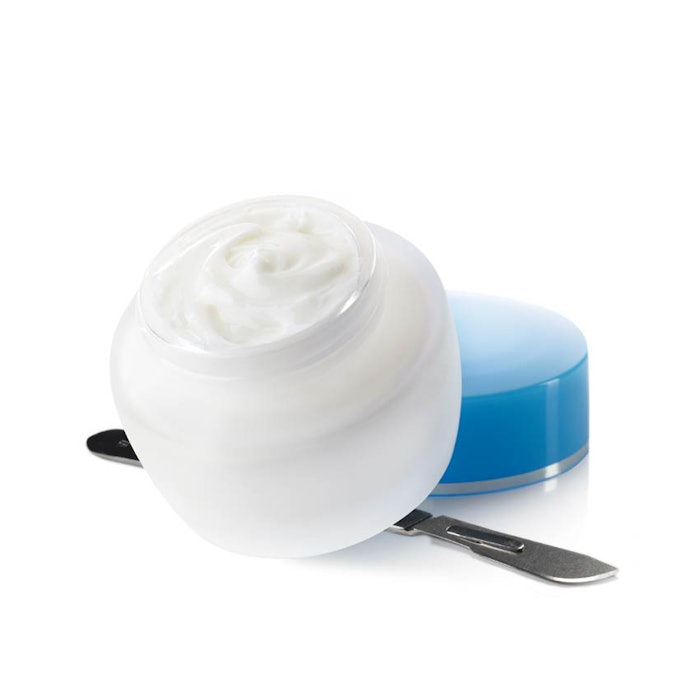
Eye lifts have made the top five esthetic surgical procedures performed in the United States, according to 2016 statistics from the American Society of Plastic Surgeons. The average cost is approx. $2,874, not including anesthesia, operating room facilities or other related expenses, such as pain medication, recovery and time away from work—all costly additional considerations. For these reasons, the average person often will skip the scalpel and instead turn to skin care for eye rejuvenation.
Eye Physiology
Eyes are the biggest indicator of age, emotional state and even health. As with everything in skin care, it all goes back to the physiology of the eye area. The skin surrounding the eye houses key muscles underneath that are linked to both autonomic physiological and emotional stimulation. The occipitofrontalis muscle raises the eyebrows when you are alarmed, alert, surprised or excited. The orbicularis oculi muscles close the eye lids when you sleep, blink, rub or are irritated.
Daily life has you exercise these muscles extensively over the course of one day. Extend this to months and years, and your eye muscles get a workout like no other…if only the muscles of your abdomen were put to that kind of work automatically. Unlike the abdomen area, the skin overlying the eye muscles is comparatively weak and thin, making it subject to a plethora of aging symptoms, such as wrinkles, dark coloration, sagging and puffiness.
Signs of Eye Aging
Here’s what contributes to the signs of aging in the delicate eye area.
Thin skin. The skin around the eyes is 10 times thinner than the skin on the face, and is in an almost constant state of movement. Blinking alone produces 10,000 movements per day. Other facial movements and expressions, such as smiles, squinting and stress, can also affect the eye area, creating fine lines or crows feet.
Sagging. The eye area contains little subcutaneous fat tissue that becomes less plump with aging. Collagen and elastin are in lower quantities in this area. As it decreases, it begins to lose its ability to create structural support for the skin. This can be further aggravated by sun exposure, smoking and other environmental exposures. The result—skin loses its ability to “snap back,” and begins to sag.
Dark circles. This occurs when thinning skin and loss of fat and collagen make the skin appear more translucent. The reddish-blue blood vessels under the eyes appear more obvious. Exposure to sunlight also prompts the body to produce melanin, the pigment that gives skin its color, which can make the area under the eyes appear darker. Periorbital hyperpigmentation, a condition that results in more melanin being produced by the skin below the eyes, can also result in dark circles.
Puffiness. While eye puffiness has a hereditary component, external factors such as exposure to pollution and topical irritants can trigger skin inflammation and contribute to puffy eyes. Poor or compromised blood flow builds pressure in the tiny capillaries in the skin, causing blood retention and eventually resulting in greater damage to the already compromised collagen and connective tissue. As the damage worsens, the supply of oxygen to the affected area is likewise compromised. Fluid can also accumulate as lymphatic drainage decreases with aging and capillary permeability increases, both of which contribute further to puffiness around the eyes. A protrusion of intraorbital fat (a crescent-shaped pad that is frequently inherited), can hold on to unusual amounts of water as well.
Eye Lift Ingredients
As an alternative to an eye lift, skin care can offer a multifaceted solution to all the above issues. The most advanced ingredients can have real benefits to smooth, soothe, firm, lift, support capillary integrity, brighten, reduce dark coloration and enhance circulation.

Moisturizers. For many decades, the skin care approach to wrinkling and sagging around the eye area was moisturization. The belief was that by plumping up the dehydrated surface, superficial lines would decrease. While this was true, actual firming of the structural underpinnings was ignored, making the eye lift one of the only options for immediate and noticeable results.
Moisturizers beneficial to the eye area include hyaluronic acid (sodium hyaluronate), grape seed oil, shea butter, seaweed and squalane. In addition to preventing moisture loss by mimicking the lipid content of skin, grape seed oil also shows antioxidant and anti-degenerative benefits. Squalane provides emollient properties to the skin but also prevents water loss and dryness. Meanwhile, there are 12 vitamins in the seaweed Laminaria digitata, along with 18 amino acids and 42 trace elements to provide hydrating, nourishing an antioxidant properties.
Retinoids. Retinoids are a class of compounds (retinoic acid, retinol and retinyl palmitate) proven effective against wrinkles, but they need to be used carefully around the sensitive eye area because of undesirable side effects such as irritation. The severity of irritation from retinoids runs parallel to their efficacy; the higher the efficacy, the higher the irritation.
Peptides. Amino acids are the smallest building blocks of protein. When several amino acids link, they form a peptide, i.e., five of them make up a pentapeptide. When many amino acid link together, proteins are formed. Because the choice and sequencing of the amino acids are so varied, so are the resulting proteins.
The interaction between a peptide and its molecular target can activate or inhibit a specific enzyme/receptor, causing one or more physiological effects. Peptides interact with enzymes or receptors through the “lock-and- key” model. The interaction between a peptide and its molecular target can activate or inhibit a specific enzyme/receptor, causing one or more physiological effects. Peptides regulate many functions in the skin. Biomimetic messenger peptides work through a wound-healing pathway, activating genes associated with collagen, creating a cross-linking patterned on a specific natural collagen fragment, which signals the cells to firm the epidermal/dermal junction.
Beneficial peptides for the eye area include palmitoyl oligopeptide, palmitoyl tetrapeptide, dipeptide, Matrixyl 3000*, hexapeptide 2, hexapeptide 8 and biopeptides.
Palmitoyl oligopeptide can increase collagen, elastin, hyaluronic acid and glucosaminoglycan production, while palmitoyl tetrapeptide has more of an anti-inflammatory effect. Dipeptide helps increase drainage, and Matrixyl 3000 reduces the appearance of wrinkles by promoting collagen and stimulating fibroblasts. While hexapeptide 8 prohibits expression activity in a similar fashion to injectables, hexapeptide-2 decreases melanin synthesis to lighten skin. Biopeptides present in this seaweed are rich in praline, glycine and lysine, which block or partially block the action of elastase to prevent the breakdown of elastin.
Lighteners. Ingredients shown to help lighten a darkened eye area include licorice and daisy flower extract. Glabridin in licorice inhibits pigmentation by preventing tyrosinase activation. Daisy flower helps reduce melanin activity, provide even pigmentation and make age spots less visible.
Stimulants. To increase circulation, gingko biloba can be used to not only increase circulation and oxygen, but also strengthen capillaries. Caffeine helps to stimulate cell metabolism and promote the hydrolysis of triglycerides into fatty acids to reduce under-eye puffiness and dark circles.
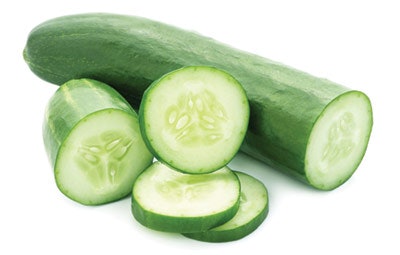
Anti-inflammatories. Cucumber, green tea, rooibos, chamomile and aloe vera all provide an anti-inflammatory benefit for eyes. Cucumber also has soothing and skin tightening properties. Both green tea and rooibos tea have antioxidant and free radical scavenging benefits. While aloe is well known as an anti-inflammatory, it also protects skin from UV damage and promotes skin rejuvenation.
Additional functions. Horsechestnut is rich in vitamin K, which reduces capillary permeability. In Japan, it is used to reduce swelling and inflammation after surgery. Chrysin is a natural compound isolated from honeycomb that enhances the enzymes responsible for clearance of colored compounds.
A Comprehensive Approach
Developments in ingredients, as well as new research into the causes of aging around the eyes have made targeted, advanced skin care both a practical means to slow down the aging process, as well as a viable means to treat existing conditions. While an eye lift surgically stretches the skin to lift up the area and reduce skin sagging, it doesn’t address many of the other signs of aging that can accompany it. Skin care ingredients can strengthen the area to reduce sagging, as well as reduce other key signs of aging, such as wrinkles, dark circles and under eye puffiness.
*Matrixyl 3000 is a complex by Sederma containing palmitoyl tripeptide-1 and palmitoyl tetrapeptide-7. www.sederma.com

